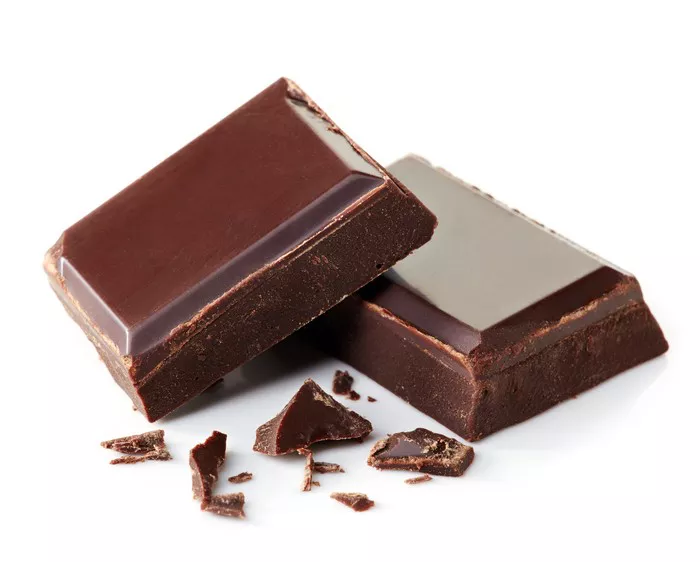Flourless chocolate cake, often lauded for its rich, dense texture and intense chocolate flavor, is a popular dessert choice for those avoiding gluten or seeking a decadent treat. But is this indulgent dessert a healthy option? In this article, we will explore the nutritional breakdown, health benefits, and potential concerns associated with flourless chocolate cake. We will also discuss healthier alternatives and tips for making a more health-conscious version of this beloved dessert.
SEE ASLO: Is Greek Yogurt Good for Blood Sugar?
Nutritional Breakdown
Comparison to Traditional Chocolate Cake
Calories: Flourless chocolate cake often has a higher calorie count per serving compared to traditional chocolate cake. This is primarily due to its richer, more concentrated ingredients like chocolate and butter.
Fat: Flourless chocolate cake typically contains more fat, especially saturated fat, due to its reliance on butter or oil and chocolate. Traditional chocolate cake recipes also include fats but often have added flour and other ingredients that may lower the overall fat content.
Sugar: The sugar content in flourless chocolate cake can be comparable to or higher than that of traditional chocolate cake. However, recipes vary, and some flourless versions may use less sugar or alternative sweeteners.
Protein: Flourless chocolate cake may have a slightly higher protein content if eggs are used as a significant ingredient. Traditional chocolate cake contains protein from flour and eggs but generally in lower amounts compared to flourless versions.
Absence of Gluten and Nutritional Benefits
One of the main advantages of flourless chocolate cake is its absence of gluten, making it suitable for individuals with celiac disease or gluten sensitivity. Additionally, flourless chocolate cake may contain:
Fiber: Depending on the recipe, some flourless cakes may use ingredients like almond flour, which is higher in fiber than traditional wheat flour.
Antioxidants: Dark chocolate, a common ingredient in flourless chocolate cakes, is rich in antioxidants such as flavonoids, which can contribute to overall health.
Minerals: Dark chocolate is also a good source of minerals like magnesium, iron, and zinc, which are beneficial for various bodily functions.
Health Benefits
Lower Calorie and Sugar Content
Higher Fiber Content
Flourless cakes that incorporate ingredients like almond flour or coconut flour can provide a higher fiber content compared to cakes made with traditional wheat flour. Fiber aids in digestion and can help maintain healthy blood sugar levels.
Improved Blood Sugar Control
For individuals managing blood sugar levels, flourless chocolate cake made with low-glycemic sweeteners and high-fiber ingredients may offer better glycemic control compared to traditional cakes. However, this benefit is highly dependent on the specific recipe and ingredients used.
Health Concerns
High Fat Content
One of the primary concerns with flourless chocolate cake is its high fat content. The rich ingredients, including butter and chocolate, contribute to a higher amount of saturated fat. Excessive consumption of saturated fat can lead to heart health issues if not balanced with a healthy diet.
Added Sugar
Flourless chocolate cakes can still contain substantial amounts of added sugar, which can impact overall health, particularly if consumed in large quantities. Some recipes may use refined sugars, which offer little nutritional benefit.
Allergy Concerns
Flourless chocolate cakes are often made with alternative flours like almond flour, which can pose an issue for those with nut allergies. It’s important to consider potential allergens when preparing or purchasing flourless cakes.
Alternatives
Healthier Sweeteners
Healthy Fats
Incorporating healthier fats such as avocado or coconut oil can reduce the amount of saturated fat in the cake while still providing richness and moisture. These fats can contribute to heart health when used in moderation.
Gluten-Free Flour Blends
For those concerned with gluten but seeking a different texture or additional nutrients, experimenting with gluten-free flour blends that include a mix of almond flour, coconut flour, and other alternatives can provide a balanced approach.
Tips for Making Healthier Flourless Chocolate Cake
Reduce Sugar and Fat
To cut down on sugar and fat, try using less sugar or substituting it with healthier sweeteners. Additionally, reduce the amount of butter or oil used, and consider using a combination of healthy fats for a more balanced approach.
Opt for Alternative Ingredients
Incorporate ingredients like mashed avocado or Greek yogurt to maintain the cake’s moistness while lowering saturated fat. You can also use high-quality cocoa powder or dark chocolate with a higher cocoa content for added antioxidants.
Moderation is Key
Even though flourless chocolate cake can be made with healthier ingredients, it’s crucial to remember that it remains a dessert and should be consumed in moderation. Balancing indulgent treats with a diet rich in fruits, vegetables, whole grains, and lean proteins is essential for maintaining overall health.
Conclusion
While flourless chocolate cake offers some nutritional benefits over traditional chocolate cake, it is not without its drawbacks. By making thoughtful ingredient choices and enjoying this dessert in moderation, you can indulge in a healthier way while still savoring the rich, decadent flavors of flourless chocolate cake.
Related Topics:



























